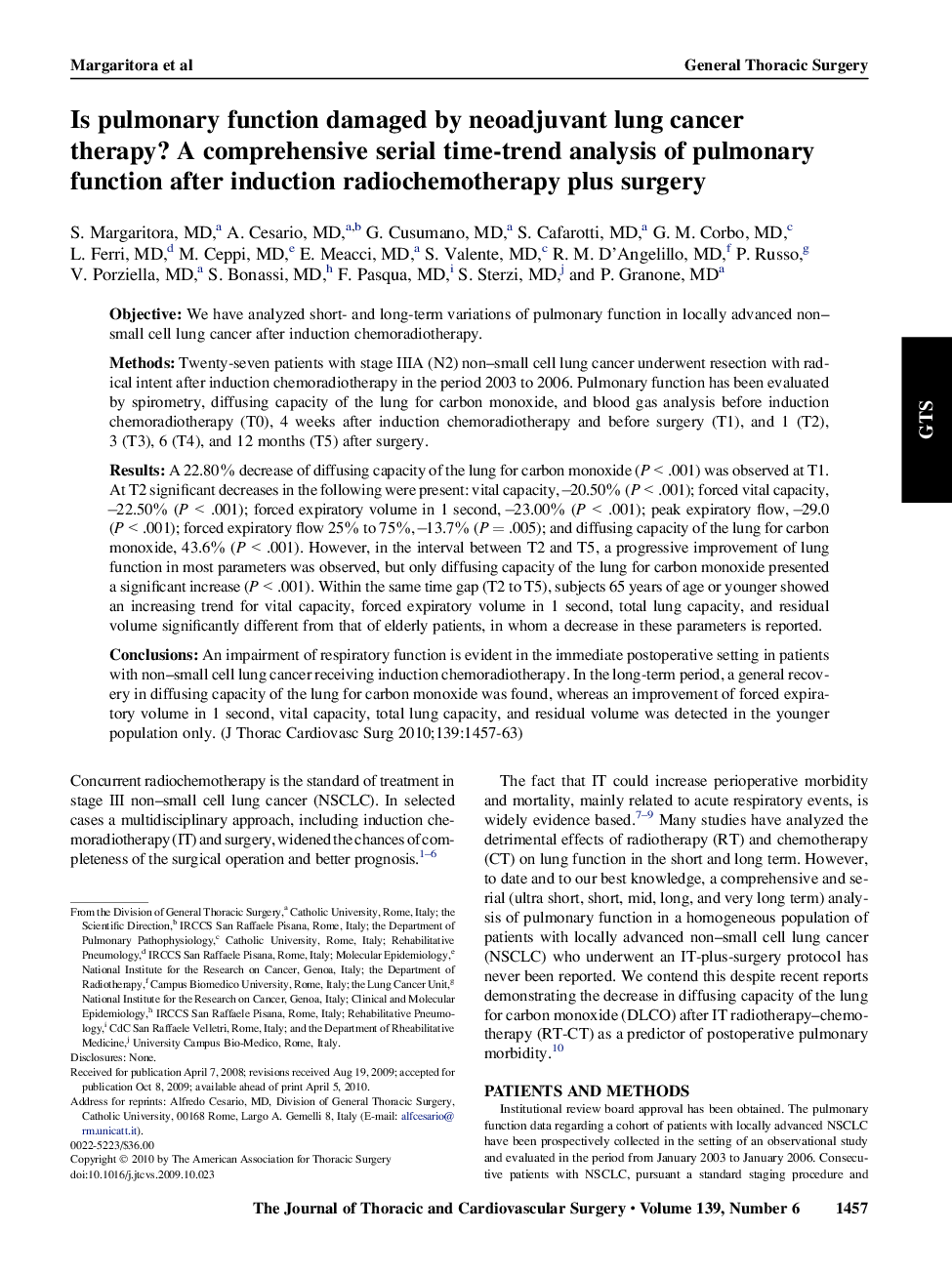| کد مقاله | کد نشریه | سال انتشار | مقاله انگلیسی | نسخه تمام متن |
|---|---|---|---|---|
| 2984085 | 1578661 | 2010 | 7 صفحه PDF | دانلود رایگان |

ObjectiveWe have analyzed short- and long-term variations of pulmonary function in locally advanced non–small cell lung cancer after induction chemoradiotherapy.MethodsTwenty-seven patients with stage IIIA (N2) non–small cell lung cancer underwent resection with radical intent after induction chemoradiotherapy in the period 2003 to 2006. Pulmonary function has been evaluated by spirometry, diffusing capacity of the lung for carbon monoxide, and blood gas analysis before induction chemoradiotherapy (T0), 4 weeks after induction chemoradiotherapy and before surgery (T1), and 1 (T2), 3 (T3), 6 (T4), and 12 months (T5) after surgery.ResultsA 22.80% decrease of diffusing capacity of the lung for carbon monoxide (P < .001) was observed at T1. At T2 significant decreases in the following were present: vital capacity, −20.50% (P < .001); forced vital capacity, −22.50% (P < .001); forced expiratory volume in 1 second, −23.00% (P < .001); peak expiratory flow, −29.0 (P < .001); forced expiratory flow 25% to 75%, −13.7% (P = .005); and diffusing capacity of the lung for carbon monoxide, 43.6% (P < .001). However, in the interval between T2 and T5, a progressive improvement of lung function in most parameters was observed, but only diffusing capacity of the lung for carbon monoxide presented a significant increase (P < .001). Within the same time gap (T2 to T5), subjects 65 years of age or younger showed an increasing trend for vital capacity, forced expiratory volume in 1 second, total lung capacity, and residual volume significantly different from that of elderly patients, in whom a decrease in these parameters is reported.ConclusionsAn impairment of respiratory function is evident in the immediate postoperative setting in patients with non–small cell lung cancer receiving induction chemoradiotherapy. In the long-term period, a general recovery in diffusing capacity of the lung for carbon monoxide was found, whereas an improvement of forced expiratory volume in 1 second, vital capacity, total lung capacity, and residual volume was detected in the younger population only.
Journal: The Journal of Thoracic and Cardiovascular Surgery - Volume 139, Issue 6, June 2010, Pages 1457–1463